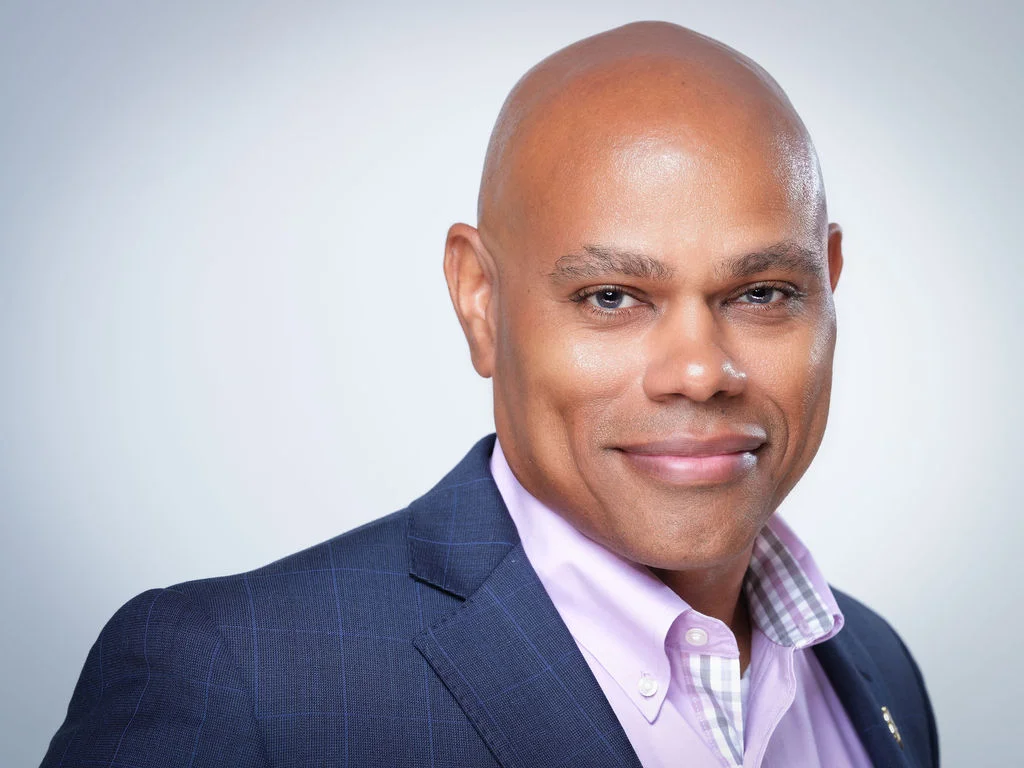When Douglas Lemott Jr. steps into a boardroom, his presence reflects the same steady leadership he honed over 27 years in the U.S. Marine Corps. Today, as Chief Information Security Officer for the Analysis and Resilience Center for Systemic Risk (ARC) in Cybersecurity, he leads with a mindset shaped by decades of service, responsibility, and commitment to protecting something larger than himself.
“Leadership is very personal for me,” Lemott said. “It’s a privilege I don’t take lightly. Whether in uniform or in the private sector, it’s always about service to others.”
At ARC, Lemott’s role centers on strengthening the security posture of the nation’s critical infrastructure by designing and implementing collaborative solutions for members who are on the front lines of systemic risk. That includes financial institutions, utility providers, and other backbone sectors essential to U.S. economic and national security.
Before joining ARC, Doug Lemott held key roles at SAP National Security Services (SAP NS2) and VMware. At SAP NS2, he served as Vice President of Security Operations and Deputy CISO, where he implemented advanced cybersecurity programs against persistent threats. He also led global cloud strategy and delivery for SAP’s platform products. At VMware, he helped government and healthcare entities meet strict compliance standards including FedRAMP and HIPAA.
But Lemott’s career didn’t begin in a corporate office. It started in the Marine Corps, where he led cyber defense for over 300,000 network users of Cybersecurity. He directed both the Security Operations Center and Network Operations Center, and later served in a senior position supporting the Marine Corps CIO and CISO. For him, the experience provided more than a technical foundation. It taught him how to lead with courage, humility, and honor.
Related insight: This article dives even deeper into the topic.
Servant Leadership in Action
Douglas Lemott Jr. subscribes to a leadership model many talk about but few embody. For him, servant leadership is not a trendy phrase. It’s a foundational value.
“I try to meet people where they are, both professionally and personally,” he said. “Leadership means helping others reach their full potential, even if that requires stepping outside their comfort zone.”
His time in the Marines shaped that approach. The Corps’ values—honor, courage, commitment—aren’t just tattooed on his service record. They remain central to how he builds trust within teams, empowers people to lead, and ensures that every voice has value, from entry-level to executive.
He recalls mentoring a young Marine officer who had been passed over for promotion, a blow that could have ended his career. Lemott walked him through the emotional toll and helped him transition into a Reserve role, where the officer ultimately thrived and earned a promotion to lieutenant colonel.
“I reminded him that his worth isn’t tied to one moment or title,” Doug Lemott said. “Sometimes a different environment is what you need to succeed. He didn’t give up, and neither did I.”
Lemott doesn’t see leadership as simply a job title or a rung on the organizational chart. To him, it’s an act of stewardship. It’s about recognizing potential, creating safe spaces for growth, and offering encouragement rooted in accountability.
His approach is personal, intentional, and often stretches beyond the confines of office walls. “I focus on the entire person, including their family,” he said. “This demonstrates commitment and validates that we all need a positive support structure to be successful.”
Building Trust and Team Momentum
At the heart of Lemott’s leadership philosophy is trust. He believes it’s the cornerstone of every strong team and every successful partnership.
“Trust is earned,” he said. “My team knows I have their back. I want to invest in them, grow them, and make sure they feel empowered.”
That empowerment is not just talk. Lemott is intentional about offering growth opportunities, including roles that challenge his team members. He praises in public and provides feedback in private, setting clear expectations while giving his team room to innovate.
Even with external partners, Lemott applies the same principles. He favors vendors who listen carefully and offer solutions grounded in a real understanding of the problem, not those who push one-size-fits-all tools.
“I appreciate a partner who listens first and recommends second,” he said. “That’s how trust is built, not by selling but by solving.”
To maintain alignment, Lemott overcommunicates his vision. As organizations scale, he says, staying connected to every level of the team becomes harder, but no less important. He believes that clarity of purpose, paired with transparent communication, keeps teams rowing in the same direction.
His strategy also includes celebrating wins—big and small. Lemott finds time to fellowship with his team outside of work, reinforcing the idea that high performance is not just about KPIs. It’s also about unity, morale, and meaningful connection.
People, Processes…And Then Tools
In an industry that never sits still, Lemott is a student as much as he is a strategist.
“I consider myself a lifelong learner,” he said. “Cybersecurity is not a field where you can afford to take time off. You have to stay sharp.”
Lemott consumes knowledge from a wide variety of sources. He reads, listens to podcasts, follows thought leaders online, and attends conferences to stay ahead of the curve. His proactive learning approach ensures that he not only keeps up with emerging technologies, but also helps shape how organizations respond to them.
At SAP NS2, Lemott approached innovation by first stabilizing operational processes. “The path I follow is people, processes, then tools,” he said. “You can’t build something scalable if your process is ad hoc.”
By documenting systems, fostering an environment of innovation, and then applying the right tools, Lemott believes leaders can drive efficiency while giving their teams a stake in the solution.
He also relies on the Eisenhower Matrix to help him focus on strategic priorities. This method categorizes tasks based on urgency and importance, helping him delegate wisely and remain agile, an essential skill in cybersecurity, where even small issues can escalate quickly.
Resilience, Vision, and the Future of Cyber Leadership
Lemott is not a fan of leadership clichés, but he is a firm believer in clarity, commitment, and consistency. His approach to setting goals is methodical and ambitious. He outlines five-year strategic visions and regularly revisits those plans to assess progress, make adjustments, and stay mission-focused.
That discipline has helped him lead through complex transitions and high-pressure situations, often where the margin for error is razor-thin. Whether facing internal challenges or navigating geopolitical cyber threats, he brings the same steady hand that once guided missions for the Marine Corps.
But for Lemott, the work is more than defense. It’s about building.
“I want to leave every organization better than I found it,” he said. “That mindset carries over from the Marines, where you’re trained to improve the position, not just maintain it.”
His vision for the future of cybersecurity is rooted in both innovation and people. As threats grow more sophisticated and infrastructure becomes more interconnected, Lemott believes leaders must invest in both the technology and the humans behind it. He sees mentorship, trust, and clear communication as non-negotiables in cultivating resilient teams.
In an industry defined by rapid change and complex risks, Douglas Lemott Jr. remains anchored in the timeless values that first called him to serve. Honor. Courage. Commitment. These are not just military creeds. In his hands, they are the building blocks of resilience for individuals, teams, and the systems that support an entire nation.
The journey of knowing never ends—continue the adventure on our homepage.






